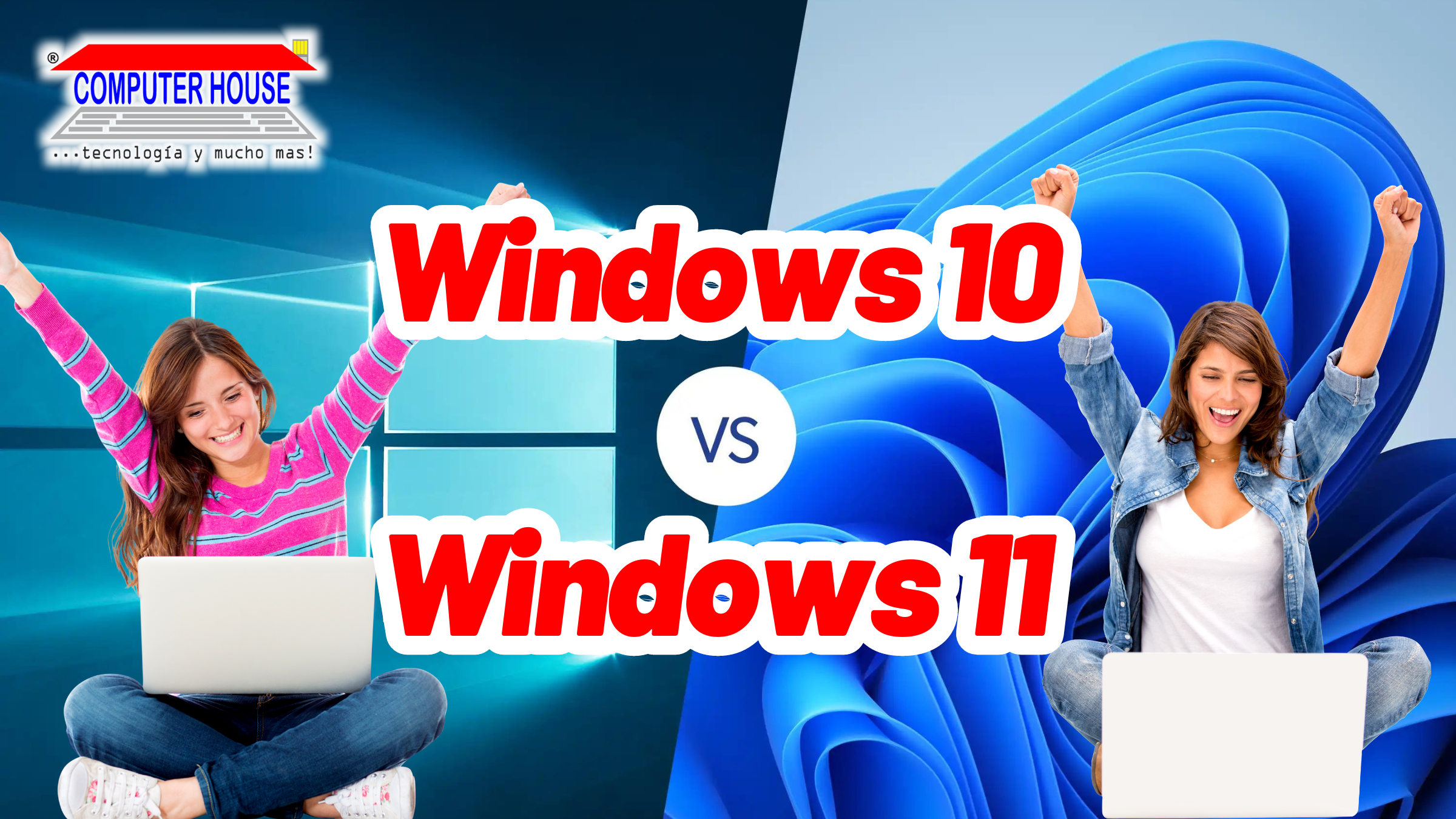Windows 11 vs. Windows 10: Have you updated it yet?

In this guide, we will perform a point-by-point comparison between Windows 11 and Windows 10, with the aim of addressing the question that many still ask today: is it advisable to update computers to the latest Windows operating system?
Overall, we stand by the claim that yes, this upgrade is worth it (a lot). However, there are always people who believe that you lose more than you gain. In this guide, we will examine the main differences between both systems, including the impact of the Windows 11 2H22 update. Before taking the plunge, keep in mind that Microsoft is no longer selling new Windows 10 licenses.
Windows 11 versus Windows 10: innovations

Although Windows 11 may seem like just a new version of Windows 10, the operating system brings with it a number of new features. There are relatively small-scale changes, like a new Start menu and taskbar, along with distinctive features like support for Android apps in Windows 11.
Design and function improvements
Windows 11 marks a significant visual change for Microsoft. In this new operating system, Microsoft places the taskbar and start menu in the center of the screen, giving it a look more similar to macOS and ChromeOS. Although it is possible to move it to the left if you prefer.
However, if you want to pin the taskbar to the right or left of the screen, unfortunately we have bad news for you, as in Windows 11, the taskbar only remains at the bottom. However, third-party applications (although paid), such as Start11, allow this customization.
Beyond this visual change, Windows 11 features windows with rounded corners, new app icons, and emojis exclusive to Windows 11. Despite this, it does not include the 3D emojis introduced by Microsoft during the initial launch.
Additionally, several small features have been added, such as live subtitles for the browser and focus mode, which allows you to customize notification settings for a specific time while you work.
Start menu and taskbar
When comparing Windows 11 to Windows 10, the most notable differences are in the start menu and taskbar.
When it comes to the Start menu, Windows 11 opts for a more simplified approach. Now, you'll just see a static list of apps, followed by your most used documents at the bottom. Notably, Live Tiles have disappeared in Windows 11, providing a cleaner look to the Start menu.
As for the taskbar, Microsoft replaces Cortana's features in Windows 11, incorporating the search box into an icon. You'll also find a dedicated icon for Microsoft Teams on the taskbar, but you have the option to remove it if you don't use Teams.
Another significant change is the location of the weather in the taskbar, now located on the left side of the screen. In Windows 10, this was known as News & Interests, but in Windows 11, it is replaced by Widgets. In addition to the weather, Widgets will show your favorite news, sports scores, traffic and more.
Windows 11 introduces virtual desktops that let you create separate spaces for work, play, or other activities.
Android app integration
The Windows 11 and Windows 10 App Stores share the same design, but the Windows 11 Store supports Android apps through the Amazon Appstore. Although only certain Android apps are supported, this integration is constantly growing.
Game feature improvements

If you are looking for the best Windows operating system for gaming, Windows 11 is the right choice. Recent updates include optimizations for running games in windowed mode and support features like Auto HDR and DirectStorage, the latter helping games load in less than a second.
Some of these features, such as DirectStorage, are also available on Windows 10. Microsoft has emphasized that gaming is a priority on Windows 11, making it the ideal platform for gamers, especially after addressing some performance issues. The mass migration of PC gamers to Windows 11 is a positive sign.
Snap Layouts and multitasking
Windows 11 makes multitasking and system performance easier with Snap Layouts, which groups windows and organizes them on the taskbar. Although this feature is available in Windows 10, Windows 11 simplifies access to Snap Layouts and provides more options. Since its launch, Microsoft has enhanced Snap Layouts with additional features.
Additionally, Windows 11 solves a major issue related to setting up multiple monitors. Now, remember how you had your windows on the external monitor and restore them to that state by disconnecting and reconnecting the monitor. This was one of the most annoying problems in Windows 10, and Windows 11 fixes it.
Improved tablet mode

Windows 11 adapts more to a tablet experience, simplifying touch interactions. New gestures are introduced to open the start menu, close windows and more, features absent in Windows 10.
Additionally, Windows 11 improves pen functionality. While you can still use Whiteboard for visual collaboration, Windows 11 now supports up to four app shortcuts via the pen.
Voice navigation has also been improved in Windows 11, allowing you to use your voice to launch apps, enter keyboard and mouse input, control the operating system, and other functions. In short, Windows 11 gives you full control of the operating system using voice commands.
Performance
According to Microsoft, Windows 11 has worked extensively on memory management to prioritize open and foreground apps. This results in higher CPU power compared to other system resources. Additionally, Windows 11 stores some data in RAM while the PC is sleeping, allowing it to wake from sleep mode 25% faster than Windows 10.
Since its launch, Windows 11 has received performance updates. In February, an update increased the speeds of solid-state drives (SSDs), for example.
Although Windows 11 is more agile than Windows 10, the differences in practical use are small. Optimizations in Windows 11 allow for better performance on less powerful laptops, but it doesn't mean giving up significant performance on Windows 10.
Collaboration and remote work

Both Windows 11 and Windows 10 are suitable for remote work, but the collaboration features in Windows 11 are noticeably superior. Options such as background blur, eye contact settings for meetings, and auto-framing are included, features absent in Windows 10.
These AI-powered features are available through Microsoft Teams, although their use may depend on your computer hardware.
Should you upgrade to Windows 11?
Being the latest version of Windows, Windows 11 is the preferred choice for most people. However, the new features also come with some limitations that can complicate certain upgrades, especially on older PCs.
Is Windows 11 worth it?
For most, upgrading to Windows 11 is worth it. It includes a variety of new features, performance improvements, and design changes. Being the latest Windows operating system, it also tends to receive more attention compared to Windows 10.
Upgrading to Windows 11 also comes with no significant risks. With minimal planning, you can easily uninstall Windows 11 and return to Windows 10. With the latest update available, this transition makes more sense than ever.
Dejar un comentario:
Ten en cuenta que los comentarios deben aprobarse antes de que se publiquen.








